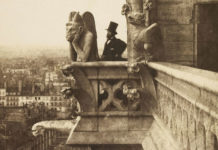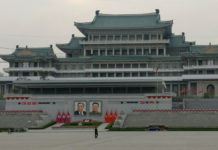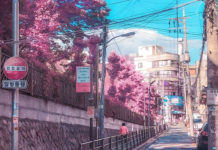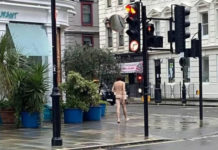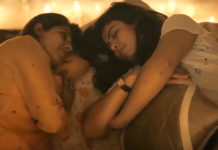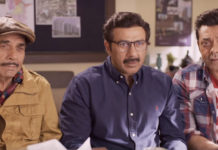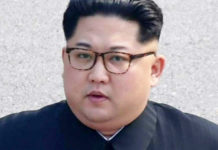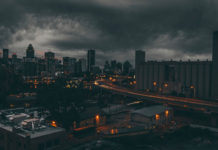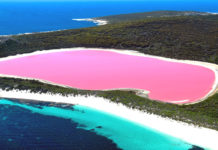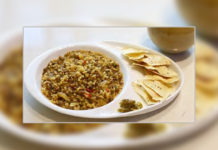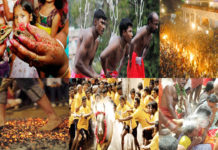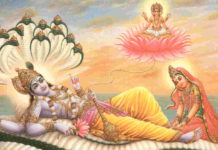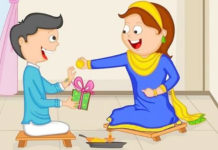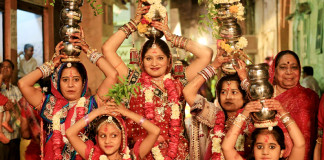Visit to is Cambodia is proposed or rigueur for Indian having enthusiasm toward the past history of India. For no place on the planet outside India one can see the eminence of its past magnificence so generally displayed as in Cambodia.
There are a few hundred Hindu and Buddhist temples ruins all through the wide open, particularly around the town of Siem Reap close to the expansive lake Tonle Sap. Siem Reap is the heart of the nation. Here is the place the astonishing sanctuary Angkor Wat has remained for almost nine hundred years.
The area is mostly neglected over long length period of time and then things have steal and causing damage by the involving compels, the fortunes of Cambodia are scattered everywhere throughout the world now, generally taken by Europeans.
Smuggling of antiques proceeds right up ’til the present time. Cambodia has an exceptionally has a record in history of war and devastation. From past hundred year’s measures have taken to preserve, unearth and study the order of history, first by the French, and now by whatever remains of the world group. Indian and United States governments are additionally helping in renovating and safeguarding the sanctuaries.
A large number of the temple look like they out of the pages of a book taken after a years. Most of them are breaking and falling down and they are in position of half unbroken wals which have seen many good days. Giant trees tress on many walls of temple creating dustruction to their base. Vast bases of Kapok trees twine around the sanctuaries like titan legendary feathered creatures grasping them in their claws. Yet there is an incredible appeal that one instantly guzzles right away. Numerous remains may seem to be comparative yet one is attracted to see more. Those, which are saved, show perfect gems and model.
The populace of this nation is of having grace and elegance. They are basic, legitimate individuals, (for the most part anglers and ranchers. There are hardly very few towns outside a couple of bigger urban areas. When you leave the city furthest reaches of Phnom Penh there are relatively few homes. . Bikes are the fundamental modes of transportation, regularly appended to trailers that are utilized to transport families and merchandise. The merchants offering books, shawls and skirts are for the most part excellent youngsters at sanctuary locales, who shock the sightseers with preferable English over one would anticipate that them will talk. These youngsters are not crude, however not suckers either and they can drive a hard deal.
The scattered sanctuaries are generally abandoned indications of the previous superbness of the Khmer individuals, the prevailing individuals of the locale. Their kingdoms waxed and disappeared, to incorporate parts of Thailand (Siam), Vietnam (Champa) and Laos at different times. There have been wars and conflicts between the Khmer individuals and their neighbors for quite a long time. The latest association of Cambodia in the bigger war in Vietnam, when the nation was floor covering besieged by the may of the American military, was only one of a few wars in its history to cause much demise and obliteration. Emulating the American retreat, common war had kept the nation devastated and edgy until the year 2000 when it picked up freedom and now has an incipient communist vote based system.
The early history of Cambodia is best examined as Pre- Angkor time and Angkor period. Angkor is a ‘Khmer-ization’ of the Sanskrit word Nagara, significance city.
Pre Angkor History
Ancient times of Cambodia begins with the incredible Khambujaraja, a Brahmanical lord of India, who had gone to the area and confronted misfortune from a wonderful woman on the mountain. After a short battle between them, a détente was drawn and the lovely woman, Mero by name, wedded Khambuja. The nation they together governed was called Khambujadesa and their relatives were known as the Khmer individuals. Khambujadesa later got to be Kampuchea and afterward Cambodia. The first dialect talked was Mon-Khmer. Later in the sixth century the “Mon” individuals moved further west to Thailand and the Khmer stayed in present day Cambodia.
Indian impact in the locale started in the first century C. E. They exchanged merchandise with Khmer by method for ocean, when flavor and silk exchange had prospered. Both Indians and Chinese applied their impacts on the nearby individuals however Indian society took a firm toehold, maybe through the deliberations of Brahmin clerics. The leaders of the time had an addition of “Varman” to their names, like the Pallava rulers of Kanchipuram. Whilst the Cholas of Tanjavur in India in the end crushed the Pallava Varmans in the eighth century, the Khmer kingdoms prospered well into the fourteenth century. Despite the fact that all the leaders of Cambodia bore the name “Varman,” they didn’t essentially fit in with the same tradition. At different periods in their history, the rulers and usurpers originated from Siam (Thailand) or Champa (Vietnam) and additionally Khambujadesa (Cambodia or Kampuchea).
There are recorded references recommending that Cambodia had been possessed in the third thousand years B.c.e. Chinese explorers later chronicled the initially settled kingdom. The main kingdom was called Funan (a change of the saying bnam or mountain in Khmer dialect). A certain Kaundinya, motivated by a fantasy, went from India and wedded a nearby princess Soma, having a place with the naga (cobra) tribe. He made the first Kaundinya line of Funan. Later in the fifth century a second explorer from India – Kaundinya Jayavarman (478-514) arrived and concentrated on re-building the Indian society. He created a more characterized Funan kingdom and was later trailed by Rudravarman in the sixth century. He was in charge of the first figures, basically of Vishnu.
After the decay of Funan kingdom Khmer individuals made Chenla kingdom, where the names of rulers Shrutavarman and Sheshthavarman are specified. They secured their capital in Shreshthapura. Later Ishanavarman, from the Khmer kingdom of Bhavapura, crushed the leftovers of Funan, and made his capital in Ishanapura.
Jayavarman I tailed him and afterward his successor Pushkaraksha again united the fragmented territories in the year 716. His capital was Shambhupura (at present Sambor). His beneficiaries kept up control over the kingdom until the end of eighth century, when Malayans and Javanese (Jayavarman II) picked up territory over numerous Khmer realms. Amid this preangkor period numerous sanctuaries were constructed, however they didn’t show the same style of construction modeling or the certainty of the later developers.
The Golden Period
The superbness of Cambodia and its sanctuaries started vigorously amid the principle of Jayavarman II starting 802 C. E. It is suspected that he originated from the illustrious court in “Java” to prevail over littler Khmer states. He proclaimed a bound together and sovereign Khambujadesa, autonomous of Javanese impact. This was the point at which the Angkor time in the historical backdrop of Cambodia was conceived. He named his capital city Hariharalaya and presented ‘linga-clique.’ to his kingdom. The clique of Devaraja or the God King (the physical partner of the heavenly being) was likewise presented by Jayavarman II. The capital stayed around the expansive Lake Tonle Sap, in and around the city of Siem Reap (until the fifteenth century, well after the death of Hindu realms, when it was moved to Phnom Penh).
Thirty years after Jayavarman II’s passing, his successor Indravarman I built the first significant sanctuary in his respect (one of the purported Rolous gathering of sanctuaries). From that point on the rulers busied themselves in building sanctuaries utilizing blocks, sandstone and laterite. Frequently they were painted in splendid colors. They additionally manufactured extensive water stores called barays. Taking after Indravarman I, his child Yasovarman I fabricated a lot of people more sanctuaries and barays.
Rajendravarman in the tenth century was a ruler occupied with building an alternate about six sanctuaries, the best safeguarded and a design perfect work of art at Bantay Srei.
Amid the principle of Udayadityavarman II, a few lingas were cut in the riverbed on Phnom Kulen (called Mahendraparvata at the time). Today it is known as the ‘Stream of thousand lingas’ and is a vacation spot in its own particular right. It was accepted that the water that streamed over the innumerable lingas of the waterway would treat the rice fields beneath. A short trek up the mountain will take a guest to the spot of thousand lingas at Kbal Spean.
The primary engravings found on sanctuary dividers, going once more to fifth century, looked like the script utilized by Pallavas of South India. Later, the Khmer created their extraordinary script and cut them into the dividers basically portraying the sanctuary and its divinity yet once in a while the engravings were simply ordinary subtle elements like a rundown of stock. There are the same number of engravings in Sanskrit dialect as in Khmer dialect.
The primary decade of eleventh century saw the rising to the throne of an effective ruler Suryavarman I (1010-1050), who brought together just about all of Khambuja and southern Thailand. He was likewise an occupied developer of sanctuaries and illustrious royal residences. Emulating his tenet, Suryavarman II (1113-1150) further stretched the kingdom. He additionally constructed the radiant sanctuary Angkor Wat (from the Indian words Nagara Vata – City Temple), the zenith of sanctuaries implicit Cambodia.
The sprawling sanctuary spreads over an one square mile region. Long dividers with stories of Hindu mythology are etched as bas-reliefs. It is a wonderful sanctuary unpredictable, developed as fanciful Mount Meru – the Hindu focal point of the Universe. The sanctuary is encompassed by a vast channel, speaking to the sea encompassing Mt. Meru. The splendid paint used to upgrade the reliefs has blurred however the structural planning and excellence are still protected. The sheer size of the sanctuary complex is amazing.
All the lords of the Hindu pantheon are spoken to in sanctuary figure. Shiva and Vishnu were held in high regard. Ramayana and Kurukshetra war are portrayed on whole dividers of stone models. A gem bas-alleviation is that of the incredible agitating of the sea by the divine beings and devils.
Models of Vishnu on the once more of his vessel Garuda or leaning back on the serpent Ananta and Shiva with his associate Parvati are rehashed in numerous sanctuaries. Additionally seen are Hanuman and Ganesh, alongside numerous tempting figures of Apsaras – reminiscent of Dev-dasis, the partners of the Gods.
An alternate beautiful ruler Jayavarman VII (1181-1220) took after Suryavaramn II. The kingdom had quickly fallen under the control of the Chams of Champa, yet the warrior-like Jayavarman VII recovered it and united Khambuja by and by. He stretched his kingdom to incorporate southern Malaya and northern Laos and additionally Champa. Burmese kingdoms including Java got to be backups.
Jayavarman VII was hitched to a Buddhist lady and later turned into a Buddhist himself. Developer of dozen or more huge sanctuaries and royal residences including the extraordinary Angkor Thom, he assembled numerous Buddhist religious communities and changed over numerous Hindu sanctuaries into Buddhist holy places. The elephant porch and the statue of the Leper King are in Angkor Thom. The statue when first found with blunted fingers, was first thought to be of an outsider (the French mixed up the climate harmed fingers to be that of an untouchable), yet truth be told is that of Yama, the ruler of death. The Elephant Terrace is a stylized sacrificial table in confronting the Royal Square, upheld by wonderfully cut figures of elephants and legendary animals. At the door to Angkor Thom is a huge tower, sufficiently vast to concede elephants. On either side of the street close to the doorway are columns of substantial statues, with celestial face on one side and the disdainful malice confront on the other.
Jayavarman VII pronounced himself to be Bodhisattva (instead of Devaraja – God-lord – presented by Jayavarman II). His hallucinations of glory are obvious in the figures of enormous facial pictures of himself on sanctuaries, particularly at the towers of Bayon. Subsequently Mahayana Buddhism (higher vehicle) had been acquainted with Khambuja, which thus denoted the start of the end of a grand Hindu time.
Emulating Jayavarman VII’s passing, engagements emerged again both inside the kingdom and in its bordering locales. Brahmins attempted to reassert their power with the assistance of Jayavarman VIII and attempted to usurp Buddhist power. Notwithstanding, their impact did not keep going excessively long. Not long after his passing Buddhism returned by and by, however it was the Hinayana Buddhism ((Theravada or lesser vehicle) that took last solid footing and still remains the predominant religion of Cambodia today. The approach of Buddhism successfully put a stop to the building spree in Cambodia. A portion of the current Hindu sanctuaries were changed over to Buddhist sanctuaries and cloisters. Divine forces of Hindu pantheon were evacuated and supplanted with statues of Buddha.
Statues of Buddha had effectively showed up in the preangkor period. These were basically ushnisha Buddha (with the bunch in the head, meaning illumination and Nirvana) in the standing position. Later Buddha statues showed up in numerous different positions of the hands of giving, lecturing and gift. Bodhisattvas and Avalokiteshvara – Lord of the World (Lokeshvara in Khmer) likewise are seen.
The last ruler of record from the lost realm is Jayavarman Parameshvara (1327 – ?). Meanwhile, the first substantial Thai state, Sukhothai, had possessed a significant part of the northern and western regions of Khmer realm. In 1430 a Thai ruler, Paramaraja II of Ayuthya laid attack on the capital and vanquished it in seven months. From that point on the decrease, surrender and wantonness set in. Exchange of the change and the tumult in the following history of the kingdom in the accompanying hundreds of years is past the extent of this article.
Amid medieval times the capital was moved to Phnom Penh. Today it is a city with organized movement with clean air and avenues, with none of the common buzzing about of a uber city in South East Asia. There are numerous Pagodas and Buddhist landmarks with overwhelming measured statutes of Buddha (counting the Emerald Buddha), embellished with gold and finished with precious stones. The utilization of gems on the statue of Buddha, who had taken a pledge of destitution, is interested. This is clarified by the craving to accentuate the transcendence of the Enlightened one, who is the chakravartin – a sovereign of the Universe – deserving of gems and wealth.
The epic story of Ramayana plays an important part in the philosophical and cultural life in Cambodia. The Khmer version, referred to as Reamker, is carved into the walls of Angkor Wat. Reamker follows the characters depicted in the Indian Ramayana with some of its own twists. It is a philosophical allegory that combines Hinduism with Buddhism. Though written in the 16th or 17th century, a full half a millennium after the sculptures of Angkor Wat, it formed the basis of Khmer life and philosophy from the time of its origing. It is the foundation of the Royal Ballet repertoire and classical theater and dance.
The protagonist of the story is Preah Ream whose wife is called Neang Seda. His brother is Preah Leak and his antagonist Ravana is called Krong Reap. Hanuman even has a love interest in a mermaid princess called Sovanna Maccha (translates to Golden Fish). Interestingly the Thai version of Ramayana (called Ramakien) is actually an adaptation of Reamker rather than the Indian original.
Conclusion
More than a million people lived around the region of Angkor Wat (Siem Reap) during its peak. Today, the Hindu population of Cambodia (population approximately 14 million) is not even measurable. The majority belongs to the Buddhist religion. Though mainly based on Hinayana (lesser Vehicle), a unique potpourri of Buddhism that is currently practiced. Its pantheon of gods includes many Hindu idols. They have not forgotten their history and still pay their obeisance to god Vishnu and Shiva as well as worship Buddha.
The lost Hindu empire of Cambodia is marked by hundreds of temples. It is the product of sweat and blood of devoted subjects of many rulers with a passion for building. Many of the temples have crumbled from neglect and vandalized. Many have not withstood the onslaught of centuries of harsh weather.
But the memory of the glory of the empires left behind by its temple-building rulers is lasting. Its vibrant former civilization and culture are firmly etched in stone sculptures, and in their ancient scripts. The beautiful bas-reliefs depicting Hindu puranas are delicate as well as delightful. The sculpted figures of lovely apsaras on its temple walls, with their modern appearing hairdo and dresses are esthetically pleasing to the eyes. The neglected temples of Ta Prohm and Preah Khan, with their overgrown roots of Kapok trees are sights to behold. The rooftops appear to be strangled by giant talons of some mythical birds in a vise-like grip. Tree roots snake around the temple walls like Anacondas lazily bathing in the sun.
Palace city of Angkor Thom with its Elephant Terrace and the Leper King (which actually is a sculpture of Yama with blunted fingers – due to damage – and so it came to be known as the Leper King), and the rows of giant statues at the entrance with the large gate are majestic. Angkor Wat is awe-inspiring by its sheer magnitude and architectural finesse.
To see all the ruins will take many trips to Cambodia but a student of history and anyone with curiosity about the eastward spread of the Indian Diaspora in yesteryears must pay at least a visit to Cambodia.
(Source: indiadivine.org)


